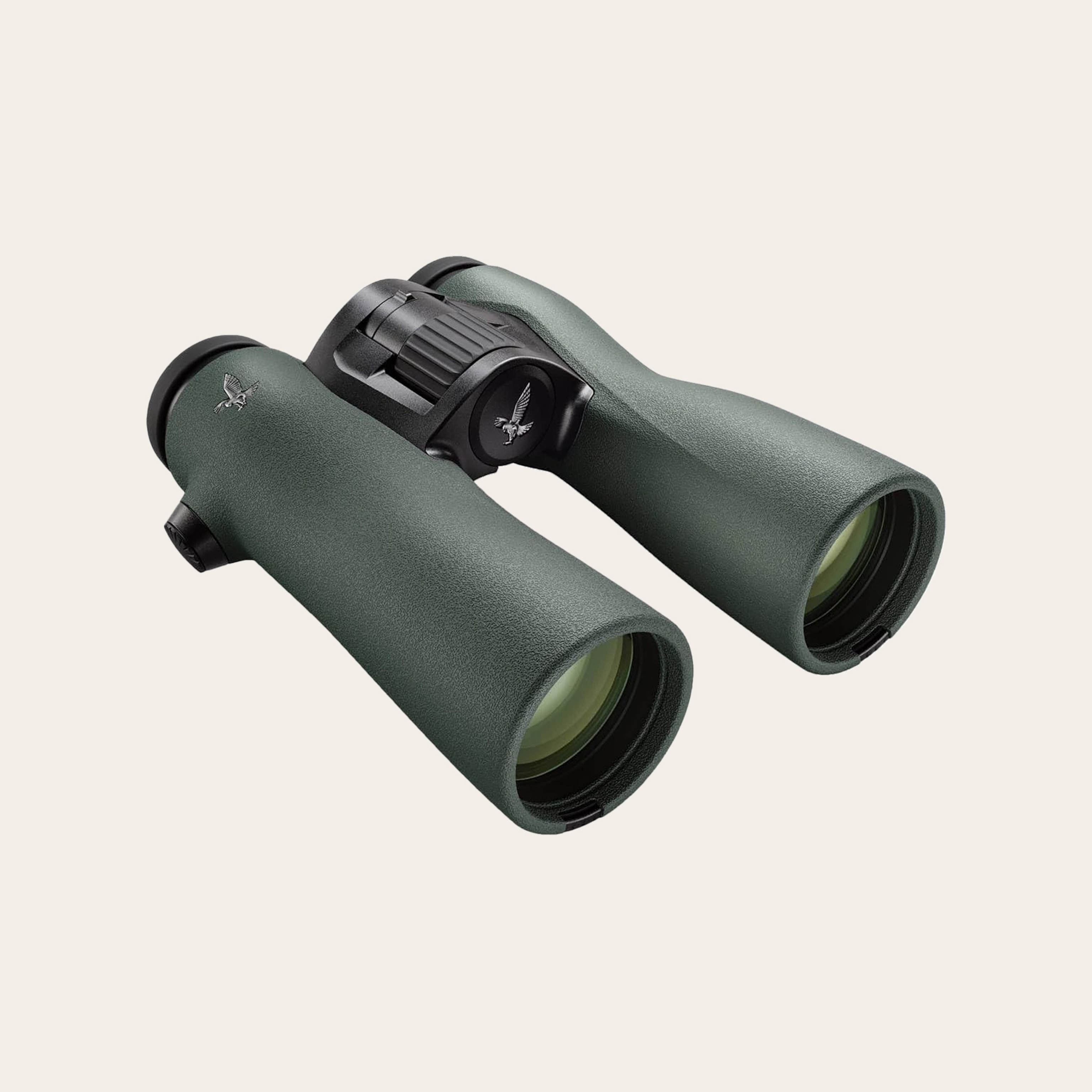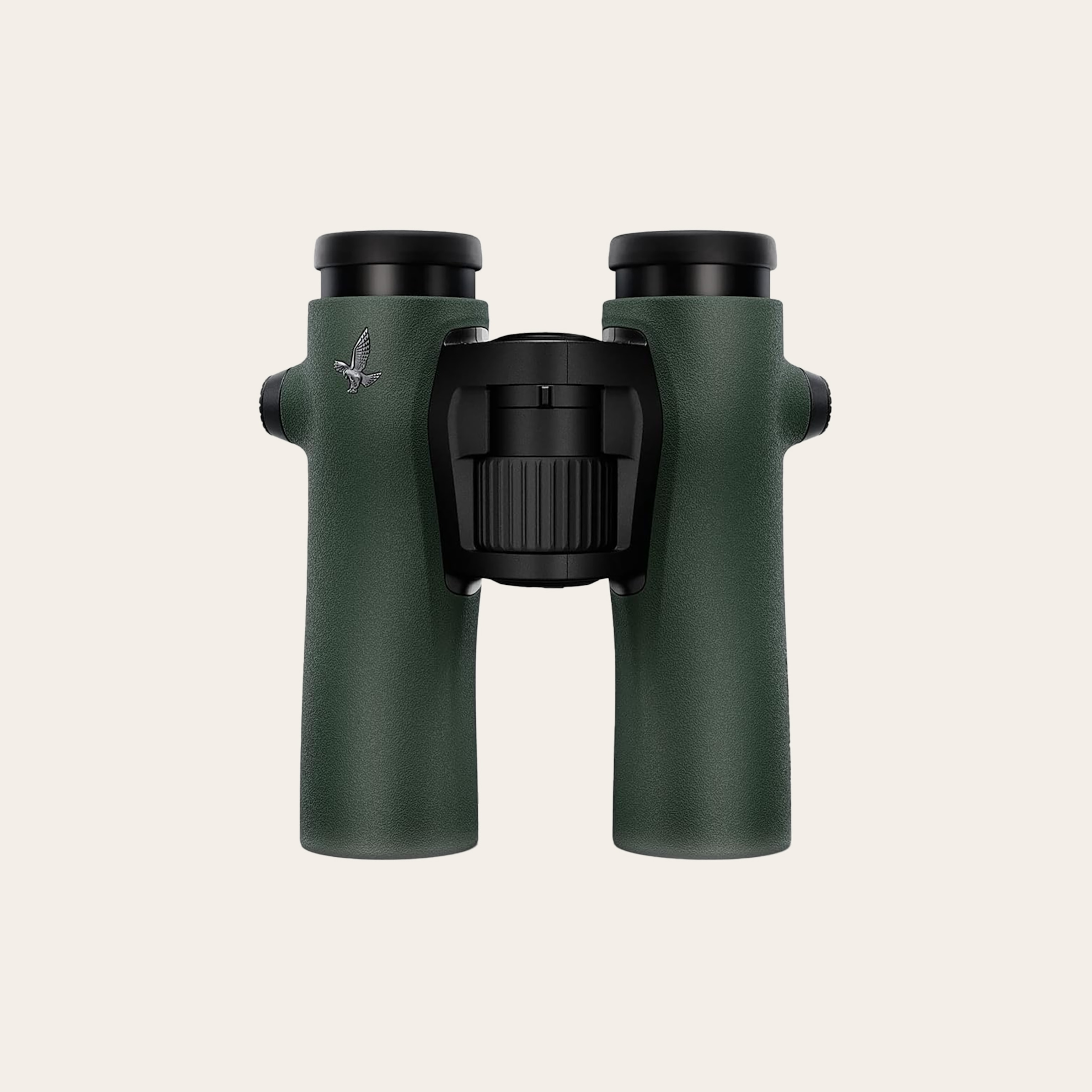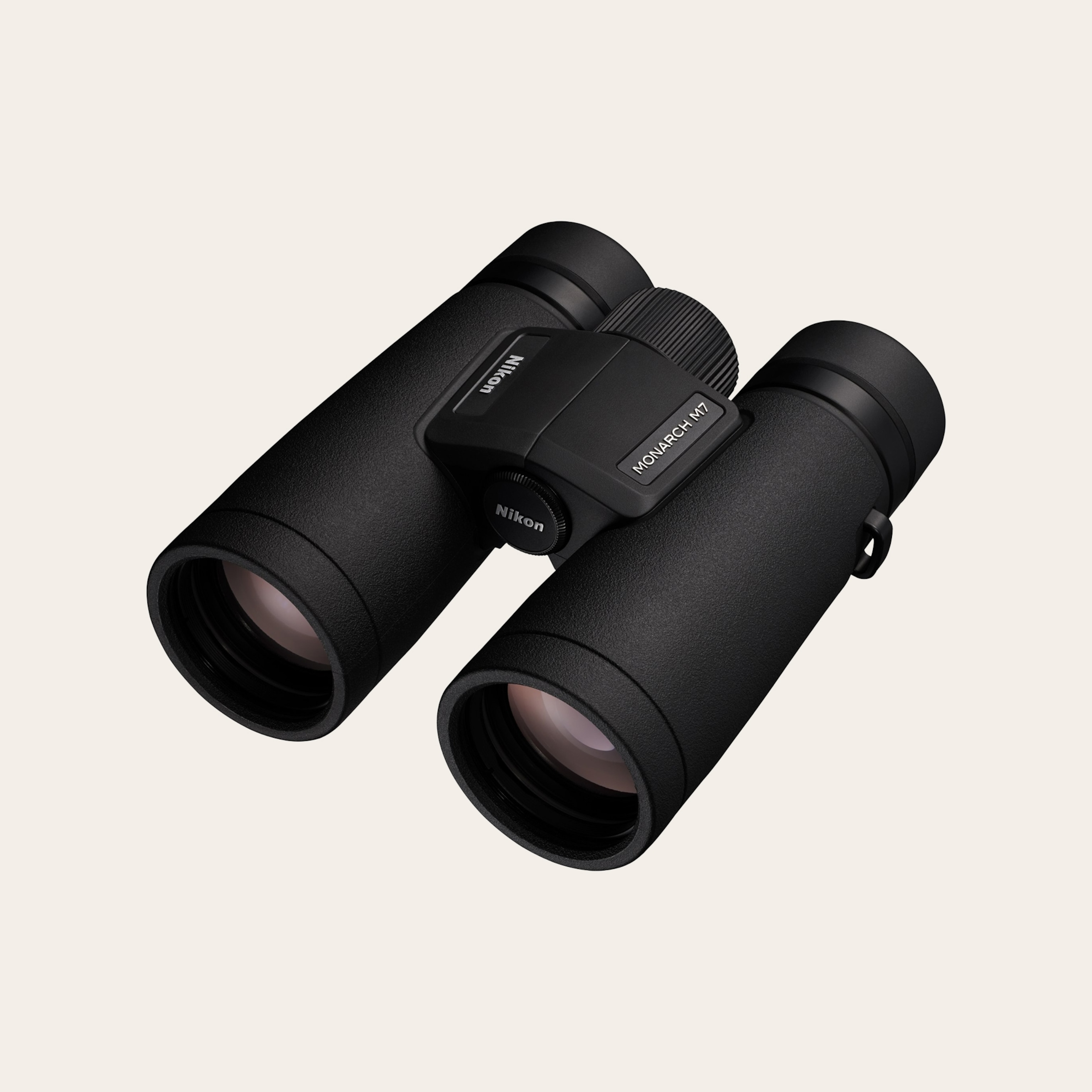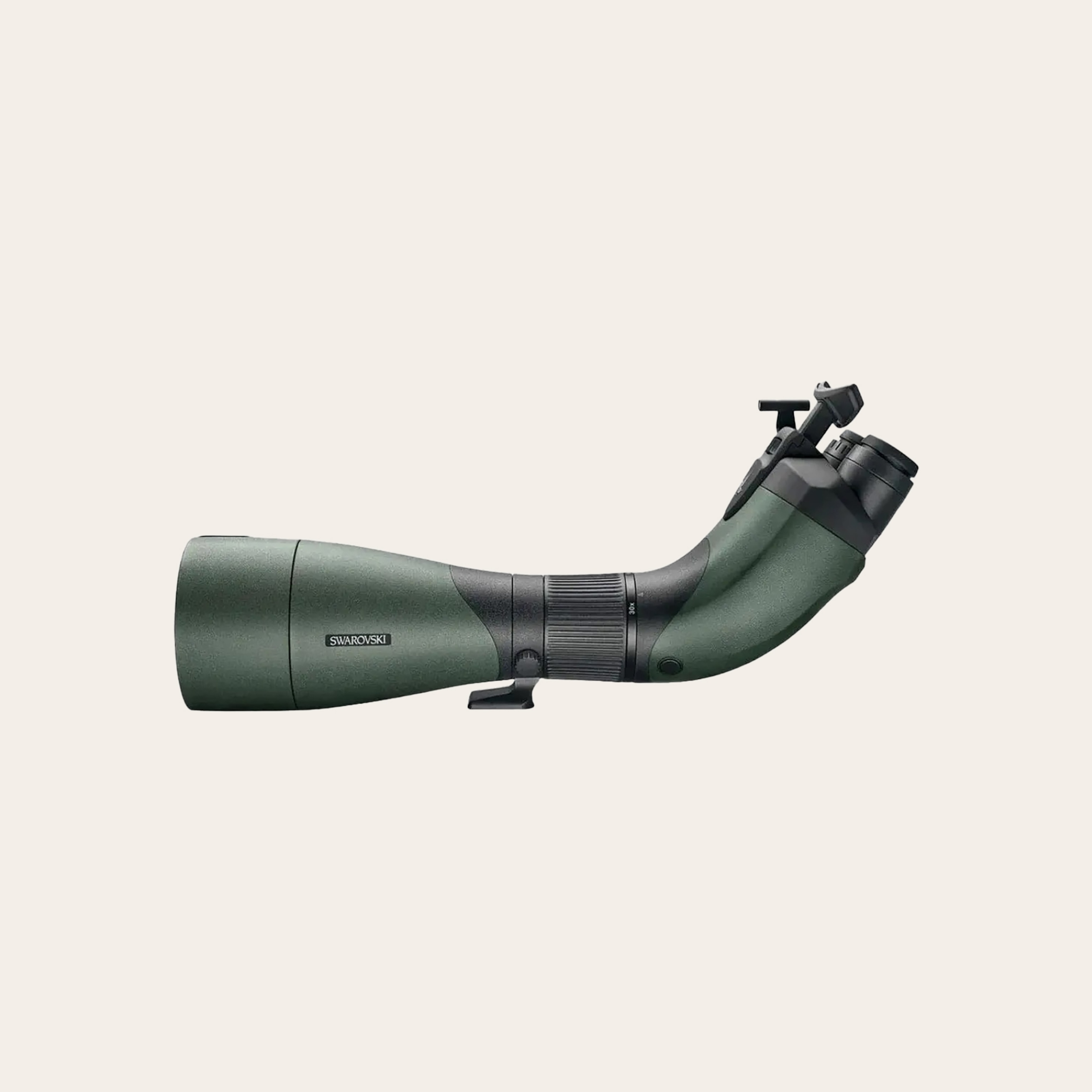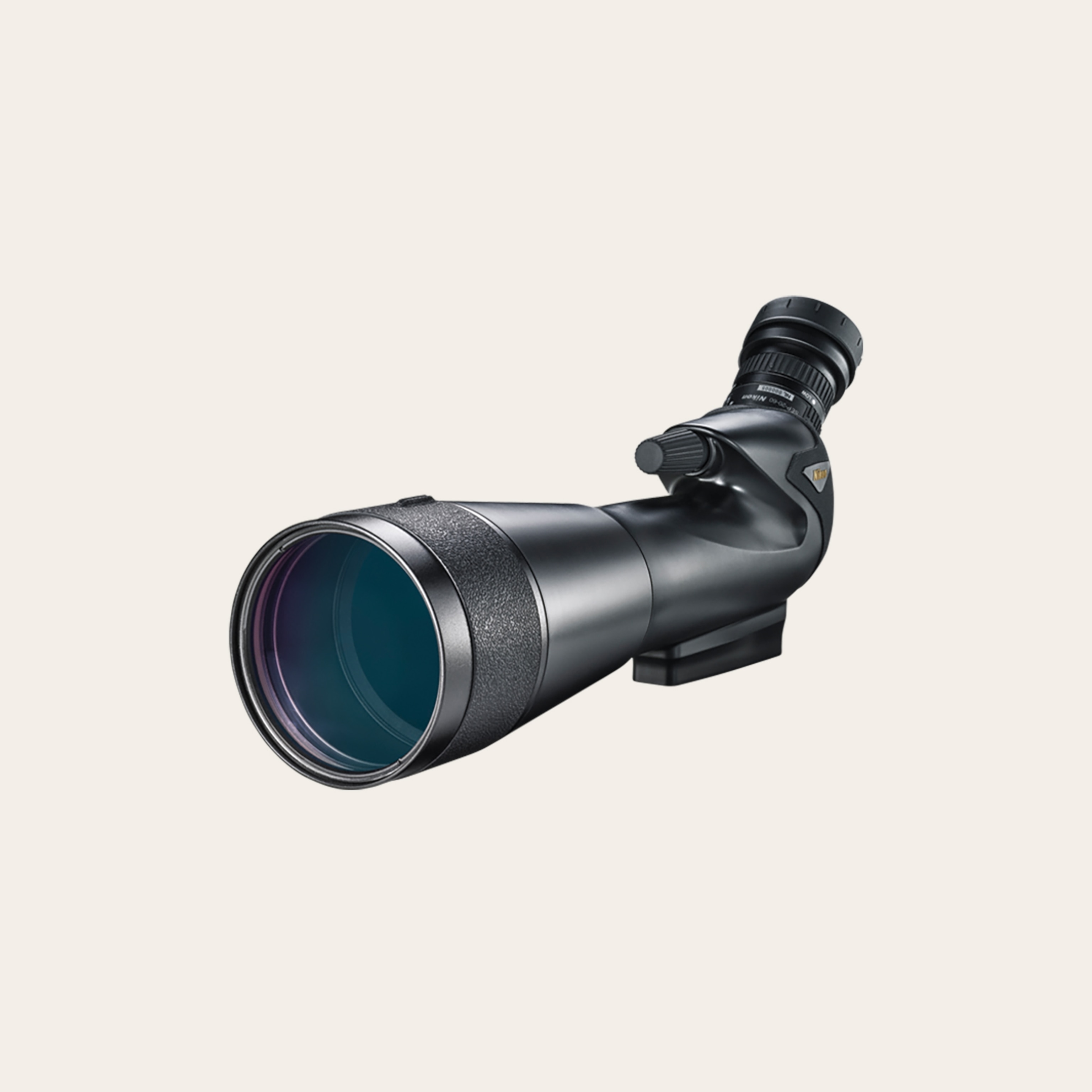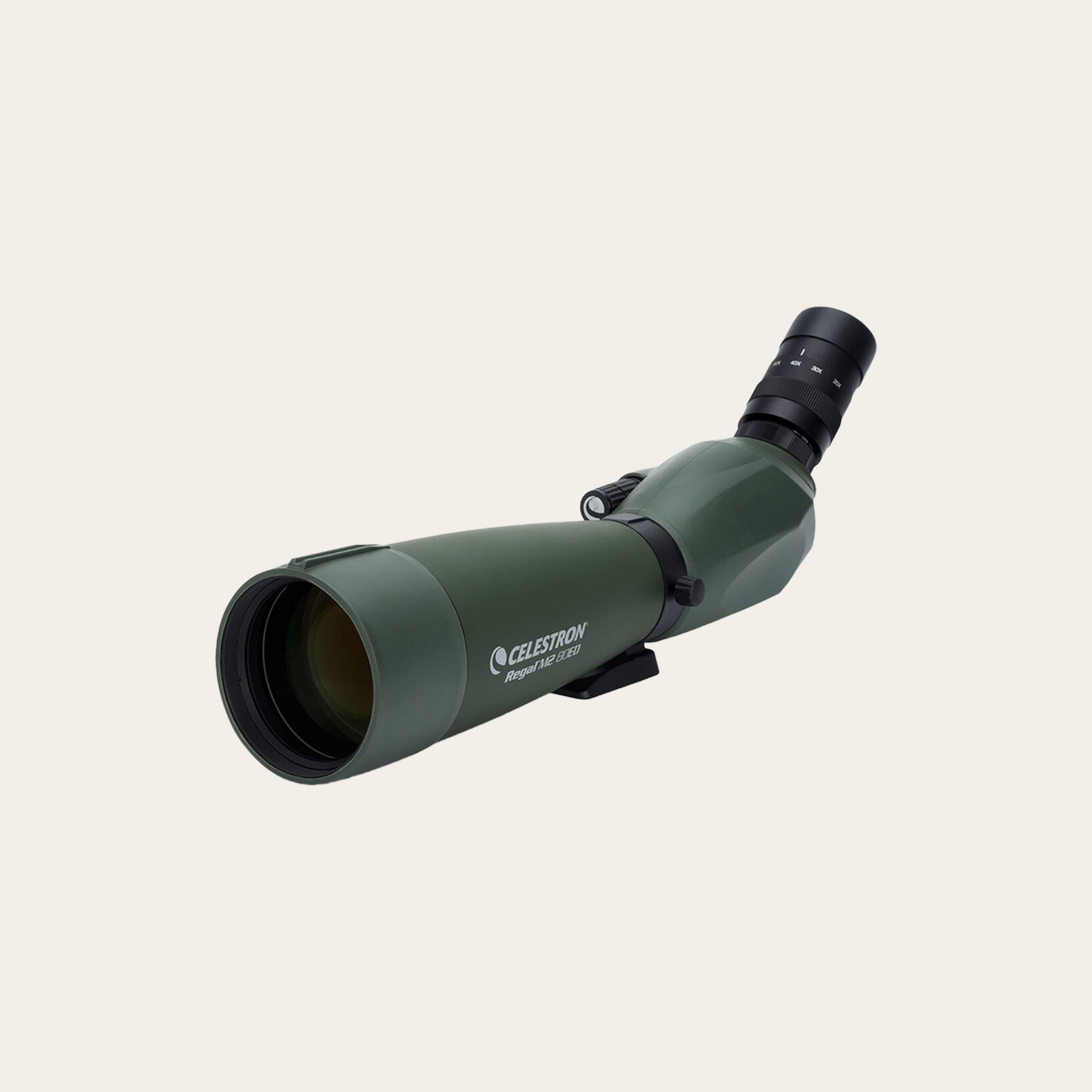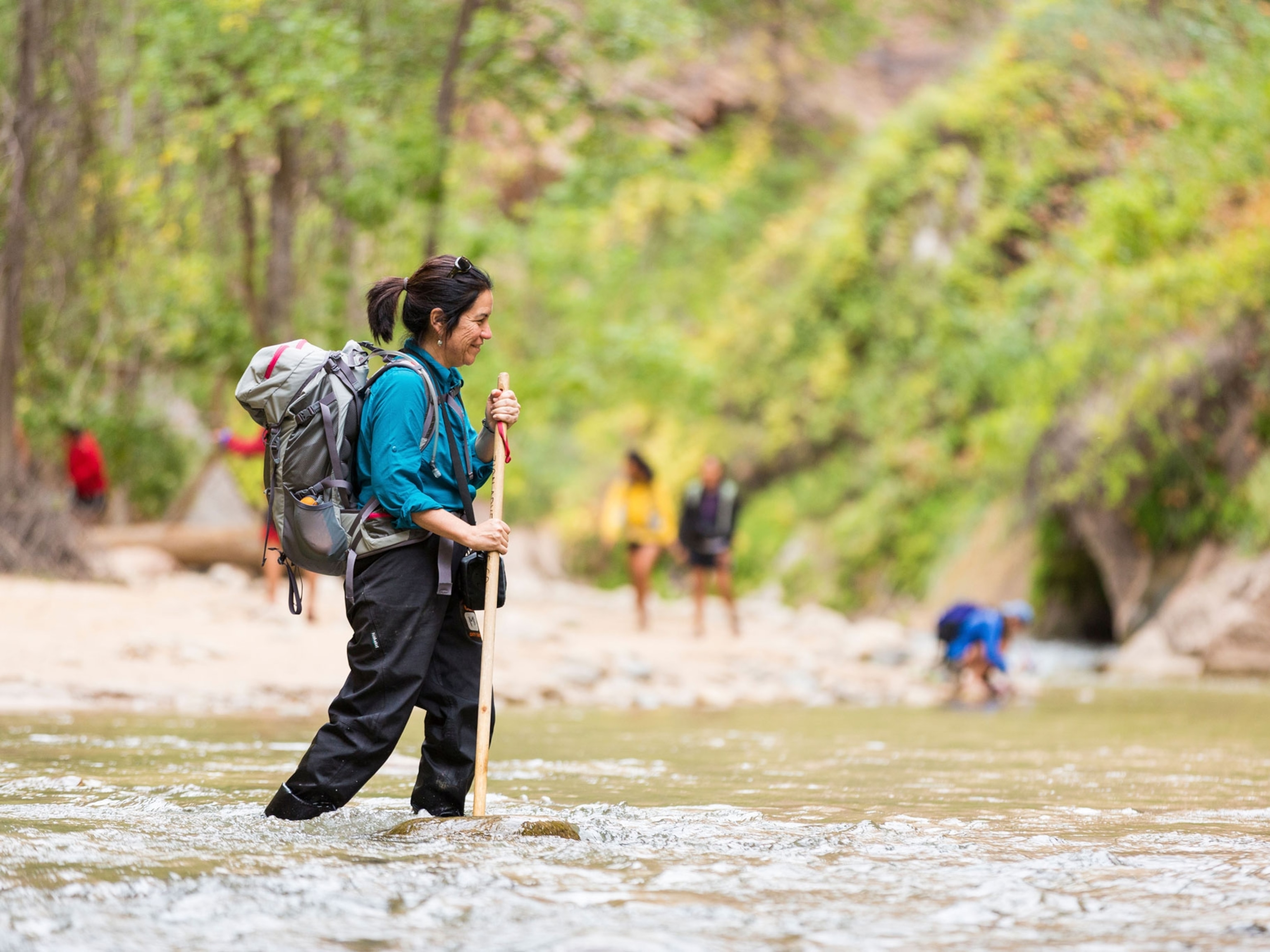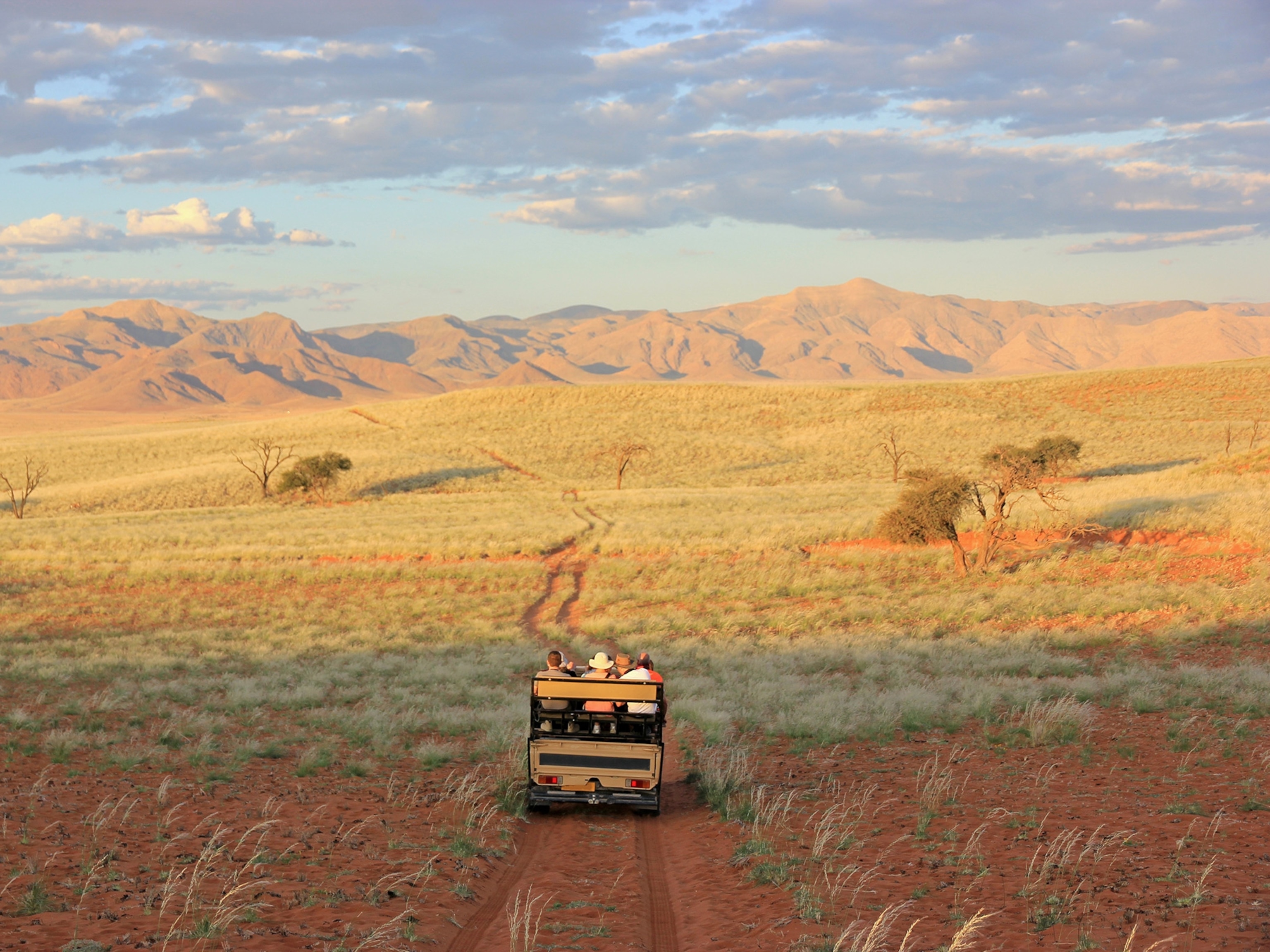Level up your birding with binoculars and spotting scopes
Combining the convenience of binoculars with the power of spotting scopes can take your birdwatching experience to new heights.
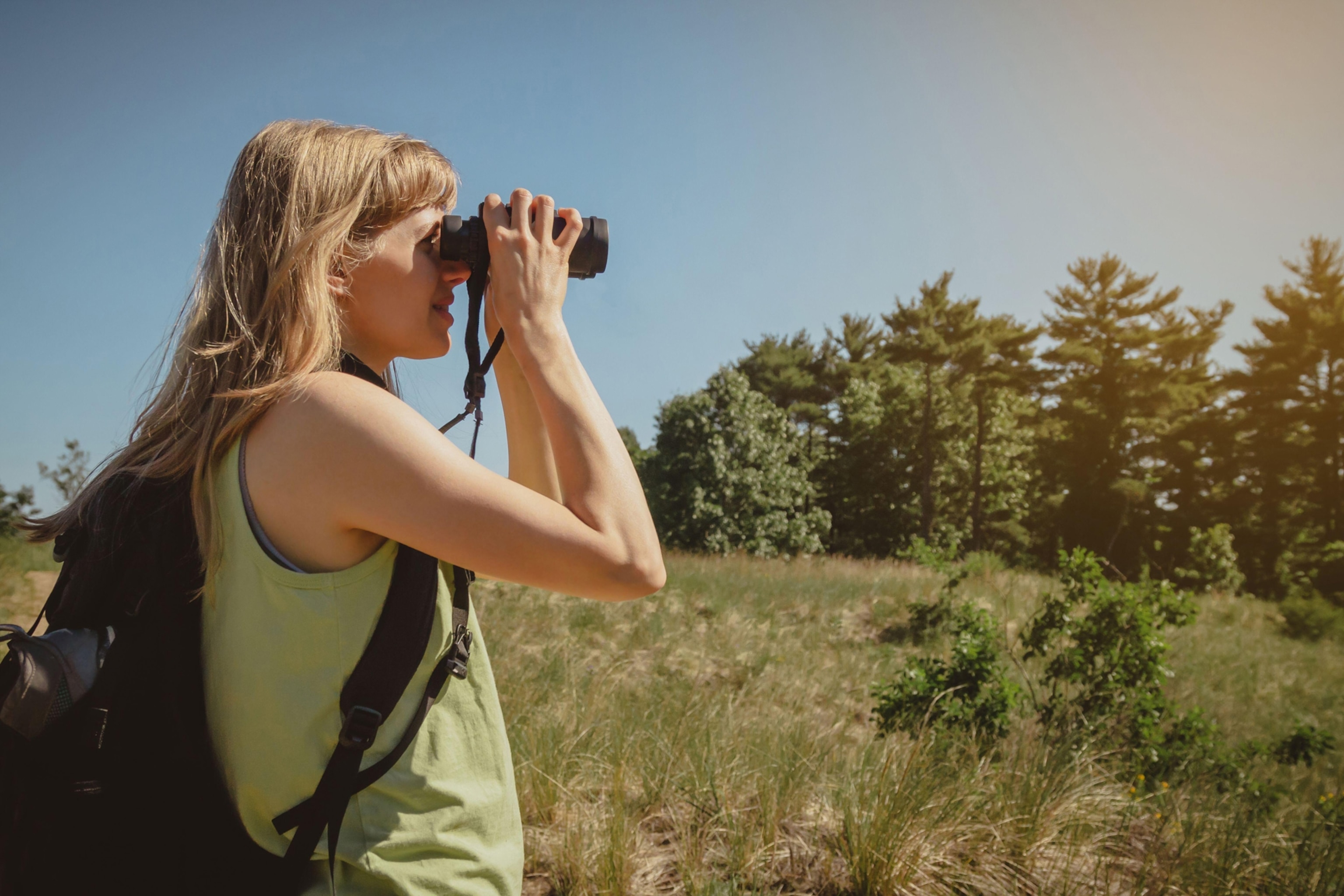
It’s no wonder that birdwatching has quickly become a favorite pastime, with one 2022 survey finding three out of 10 Americans taking up the hobby. You don’t need much to get started, other than a sturdy pair of shoes and perhaps a guidebook. However, if you’re planning a wildlife watching tour or want to catch details such as the verdin’s red-dabbed shoulders, you may want to invest in a good pair of binoculars and a spotting scope.
Lightweight and convenient, binoculars are as essential to a birder as a backpack is to a backpacker. Scopes, while less convenient, typically have higher magnification, offering incredible detail that can come in handy in observation blinds and even on the deck of expedition cruises.
Shopping for the best binoculars and spotting scopes is all about technical specifications, particularly magnification and objective lens diameter. “Your sweet spot for getting an appropriate, good pair of binoculars for your budget is sticking between eight and 10 times magnification,” says Court Whelan, expedition leader and chief sustainability officer for Natural Habitat Adventures.
Spotting scopes have superior magnification for distant birds, with some able to zoom in 20 or even 60 times over the naked eye. Other considerations for both include glass quality, field of view, size and weight, and eye relief—the latter is particularly important for people who wear glasses.
As a travel journalist with lots of wildlife watching trips under my belt, I’m well-versed in binoculars and scopes. I’ve hunkered down in a blind watching migrating sandhill cranes in Nebraska and zoomed into the markings of the Monteiro hornbill’s curved beak in Namibia. In the Arctic, I traced northern fulmars gliding along the wind from the deck of an expedition ship.
After researching several binoculars and spotting scopes, Swarovski’s Optik NL Pure 10x42 binoculars and the Optik BTX Spotting Scope System should suit most birdwatchers. The binoculars are lightweight and easy to use, plus they perform well in low light. Besides the top-notch build, the spotting scope features a two-eye BTX eyepiece module that’s similar to binoculars for comfortable viewing.
We found a few more that should suit other needs too. Read on for all our top picks.
Our picks for the best binoculars and spotting scopes for birding
• Best travel binoculars for birdwatching: Swarovski Optik NL Pure 8x32
• Best mid-priced binoculars for birdwatching: Nikon Monarch M7 10x42
• Best overall spotting scope for birdwatching: Swarovski Optik BTX Spotting Scope System
• Best budget spotting scope for birdwatching: Nikon Prostaff 5 20-60x82 mm Angled Body
• Best mid-priced spotting scope for birdwatching: Celestron Regal M2 20-60x80 mm ED Angled Zoom Spotting Scope
The best binoculars for birding
Best overall binoculars for birdwatching: Swarovski Optik NL Pure 10x42
Why we like it: With 10x magnification, these binoculars are excellent at showing plumage and markings, even at long distances. The company says the 42-millimeter objective lens diameter makes them ideal for twilight or cloudy days, as well as sunny ones. It incorporates technology that the company says reduces distortion and comes with a comfortable harness.
“I’ve been a Swarovski user for the last 15 years, and I sort of swear by them as the best binoculars, especially for being a field guide,” says Jason Nott, a naturalist guide for Wilderness Travel in Namibia. “What’s nice about [the NL 10x42s] is that they give you the magnification that you need, but [they’re] still very compact. You can still do a hike with it [and] identify a bird that is 200 meters away. It’s that perfect balance between weight, look, style, and practicality.”
Keep in mind: At 30 ounces, these binoculars are the heaviest on our list. However, they’re versatile and offer great viewing in a variety of light conditions.
Product details: Weight: 30 oz. | Field of view: 399 ft. / 1,000 yds. | Foot close focus: 6.6 ft. shortest focusing distance | Millimeter eye relief: 18 mm. | Objective lens diameter: 42 mm. | Magnification: 10x
(Here’s everything you need to start birdwatching)
Best travel binoculars for birdwatching: Swarovski Optik NL Pure 8x32
Why we like it: At 22.5 ounces, these binoculars are lightweight and compact, making them well-suited for travel. With a functional temperature range of -13 to 131 degrees Fahrenheit and a durable build, they’ll work just as well on an Arctic expedition cruise as a desert trek.
Keep in mind: The objective lens diameter on these binoculars is just 32 millimeters, which means they don’t let in as much light as models with a higher objective lens diameter. This pair is ideal for daylight conditions.
Product details: Weight: 22.8 oz. | Foot field of view: 450 ft. / 1,000 yds. | Foot close focus: 6.6 ft. shortest focusing distance | Millimeter eye relief: 18 mm. | Objective lens diameter: 32 mm. | Magnification: 8x
Best mid-priced binoculars for birdwatching: Nikon Monarch M7 10x42
Why we like it: Nikon is known for high-quality cameras and binoculars, and these Monarch M7 10x42s feature the brand’s ED glass, which provides clear, high-resolution views in a wide variety of lighting scenarios. These binoculars can focus on objects as close as 8.2 feet away, allowing for sharp closeups.
Keep in mind: The field of view is slightly lower than that of other 10x42 models, like the Swarovski Optik NL Pure 10x42. This means you may need to scan a bit more to locate the bird you’re viewing.
Product details: Weight: 24 oz. | Field of view: 362 ft. / 1,000 yds. | Close focus distance: 8.2 ft. | Millimeter eye relief: 16.5 mm. | Objective lens diameter: 42 mm. | Magnification: 10x
(These are 8 of our favorite binoculars for birdwatchers of any level)
The best spotting scopes for birding
Best overall spotting scope for birdwatching: Swarovski Optik BTX Spotting Scope System
Why we like it: Swarovski’s Optik BTX Spotting Scope System is built with a double eyepiece module that provides the magnification and objective lens diameter similar to binoculars. That means you can use the power of both eyes to see distant birds in detail. It has four objective lens diameter options with 30x or 35x magnification for excellent viewing.
“For the more avid birders and wildlife enthusiasts, there is nothing better than traveling with a spotting scope,” Nott says. “Nothing beats the Swarovski Optik Spotting Scope Set BTX 35x95, for a nature viewing [that’s] out of this world.”
Keep in mind: This spotting scope is expensive. It’s also heavy, ranging from 77.3 to 124.2 ounces, depending on the configuration. You may want to purchase a carrying case so it’s easier to transport.
Product details: Weight: 77.3 to 124.2 oz., depending on configuration | Field of view: 112 ft. / 96 ft. at 1,000 yds., depending on configuration; shortest focusing distance 7.2-16.4 ft., depending on configuration | Millimeter eye relief: 21 mm. | Effective objective lens diameter: 65, 85, 95, and 110 mm., depending on configuration | Magnification: 30x and 35x, depending on configuration
Best budget spotting scope for birdwatching: Nikon Prostaff 5 20-60x82 mm Angled Body
Why we like it: With an 82-millimeter objective lens and an adjustable 20-60x magnification, the Nikon Prostaff 5 20-60x82mm Angled Body scope has great viewing at a lower price, compared to other high-end scopes. The multicoated optics help provide good-quality images. It also has internal surface texturing, which works to minimize reflective light loss. That means images will be brighter and clearer. At 33.9 ounces, it’s lighter than some scopes and has a built-in sliding sunshade to reduce glare.
Keep in mind: At 20 feet, this scope has a slightly longer close focus distance than some other scopes, which means it will be harder to get a clear view of objects that are closer than 20 feet. However, that’s a minor drawback for an overall great scope.
Product details : Weight: 33.9 oz. (body) | Foot field of view: 109 ft. / 1,000 yds. at lowest magnification | Foot close focus: 20 ft. | Millimeter eye relief: 16.9 mm. (at lowest magnification) | Objective lens diameter: 82 mm. | Magnification: 20-60x
(These are the best bird feeders for backyard bird watching)
Best mid-priced spotting scope for birdwatching: Celestron Regal M2 20-60x80 mm ED Angled Zoom Spotting Scope
Why we like it: The Celestron Regal M2 20-60x80mm ED Angled Zoom Spotting Scope provides a 20-60x zoom eyepiece, with adjustable magnification and a good field of view. The Extra Low Dispersion ED glass is designed to minimize color distortion and increase resolution and contrast for better viewing. It uses a proprietary type of XLT lens coating, which the company says maximizes light transmission for brighter images at increased resolution and contrast.
Keep in mind: This scope’s close focus begins at 21.3 feet, so it’s not ideal for close-range viewing. However, it excels at long-range viewing, providing 20-60x magnification.
Product details: Weight: 66.6 oz. (with included eye piece) | Foot field of view: 110-52 ft. / 1,000 yds. | Foot close focus: 21.3 ft. at 20x | Millimeter eye relief: 20 mm. at 20x | Objective lens diameter: 80 mm. | Magnification: 20-60x
(7 great bird baths, for when you want to watch birds in your own backyard)
Our review process
When assessing binoculars and spotting scopes for this list, we considered brand reputation, consumer reviews, and expert opinions. We also examined technical specifications, materials, weight, and overall value for the money. Individual preference is also important, and most of our experts encourage travelers to try a variety of options before putting down their hard-earned money.
• Third-party reviews: We pored through online birding forums and reviews to learn about customers’ real-world experiences with these products.
• Expert opinions: We asked experienced guides from companies like Adventure Canada, Natural Habitat Adventures, and Wilderness Travel for their tips on selecting binoculars and spotting scopes.
• Brand reputation: We chose brands known for producing high-quality binoculars and scopes, as well as similar products such as telescopes.
• Weight: Because travelers wear binoculars over hours of exploration, we considered weight as an important factor for binoculars, but it was less of a consideration for spotting scopes.
• Material: High-quality glass and materials are key considerations, as well as durability and good grips.
• Value: We looked for binoculars and scopes worth the money. “Binoculars are the kind of thing that should last 20 years,” says Rogier Gruys, a naturalist for Adventure Canada. “You can pretty much give them to your children. They should really last.”
How to buy binoculars and spotting scopes for birding
Both binoculars and spotting scopes enhance a birding excursion. But they can be an expensive investment. As such, it’s important to think through these products before you buy. Carefully read through the technical specifications and think about how you will use your binoculars and scope—as well as how often. When will you be out at your destination (dusk or midday)? Where will you be? A road trip close to home or a safari? Here are a few things to keep in mind while shopping.
Magnification
Magnification tells you how large an object will appear in binoculars or a scope compared to the naked eye. For example, 8x magnification means the bird or object will appear eight times larger. The tradeoff for increased magnification is often a narrower field of view, which can make it harder to locate a bird or object. However, you’ll have a closer view once you hone in on them. Higher magnification in binoculars (such as 12x or 15x) can make it more difficult to hold an image steady, which can result in a shaky view.
Spotting scopes are heavier and often used with a tripod, which reduces shaking. Scopes typically have greater magnification, but at greater distances that can result in heat ripples, which can make it harder to see. However, the increased magnification is generally a good tradeoff. “If you’re going to use a scope you might as well go big because you don’t want a scope to just slightly magnify,” Whelan says.
Wide field of view
The field of view (typically described in feet at 1,000 yards/meters or degrees) refers to the size of the area you can see through binoculars or spotting scopes at a specified distance. A wider field of view can make it easier to scan a large area quickly. High magnification typically results in a narrower field of view, so consider the tradeoffs.
Size and weight
These factors are important for binoculars, since you’ll be wearing them around your neck or carrying them in your backpack on long hikes. “If it’s too heavy, it’s going to stay in your cabin,” says Gruys. “You want something that is comfortable around your neck the whole day.”
Size and weight are less of an issue for spotting scopes because you’ll likely set it up in one spot, after carrying it in.
Eye relief
This measurement is the distance between the eyepiece lens and where the eye should be for optimal viewing. It’s especially important for people who wear glasses. “Eye relief gives you an indication of how thick your glasses can be because glasses sit a little bit in front of our eyes,” Gruys says. “If you desire to [have] your glasses on, make sure you have good eye relief.”
This can vary from person to person, depending on the thickness of their glasses. At least 15 or 16 millimeters should work well for many.
Objective lens diameter
The objective lens diameter determines how much light enters the binoculars or scope. The larger this number, the better the binoculars or scope may perform in lower light conditions. “So if you had a small number like 20 or 25, it would be okay during the day, but at dusk and dawn, especially when wildlife is out, it would be kind of dark,” says Gruys. For optimal viewing, Gruys recommends an objective lens diameter of 32 or above for general binocular use.
However, there is a tradeoff—larger objective lens diameters mean binoculars may be larger, heavier, and more expensive.
Frequently asked questions
What is the difference between binoculars and spotting scopes?
Binoculars are generally relatively lightweight, portable, and can be worn with a strap around the neck. Most spotting scopes have a single eyepiece, similar to a telescope, and provide more magnification. However, spotting scopes are heavier and bulkier than binoculars and are generally used with a tripod.
What is a spotting scope?
Spotting scopes are similar to small telescopes and provide excellent magnification for bird watching. They are generally set up with a tripod. While most have a single eyepiece, one of our top picks, Swarovski’s BTX model, has a two-eyepiece setup similar to binoculars.
What do the numbers on binoculars and spotting scopes mean?
Binoculars and spotting scopes typically have two key numbers, such as “8x42.” The first number is the magnification. A pair of binoculars with an 8x magnification will make objects appear eight times larger. The second number is the objective lens diameter, which is a reflection of how much light the binoculars gather. Binoculars with a higher objective lens diameter generally perform better in low light. However, that usually means the binoculars or spotting scope may be heavier, larger, and more expensive.
How do you choose binoculars for birdwatching?
Consider characteristics like magnification, objective lens diameter, field of view, weight, size, eye relief, and cost. Since the best birdwatching often takes place at dawn and dusk, selecting a pair with a higher objective lens diameter (for low light conditions) may be better for viewing. However, that generally means a heavier and more expensive pair.
What are the best spotting scopes?
The best spotting scopes offer excellent magnification and objective lens diameter and are made from high-quality materials. Brands like Swarovski, Nikon, and Celestron are well-regarded by many birdwatchers.
